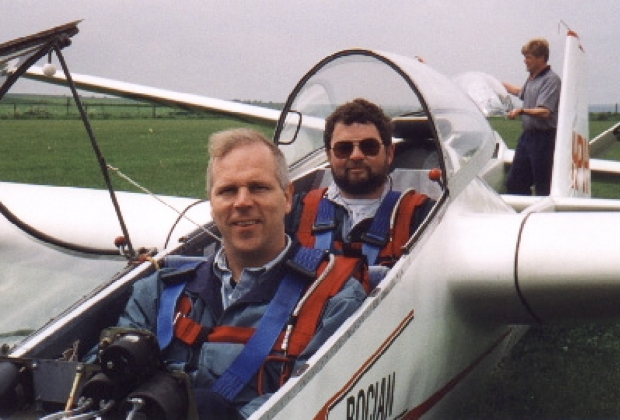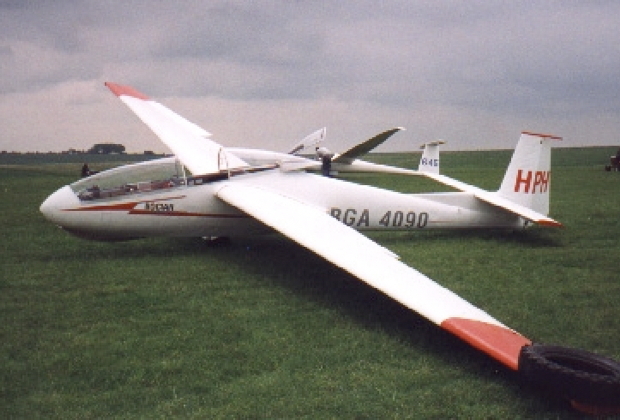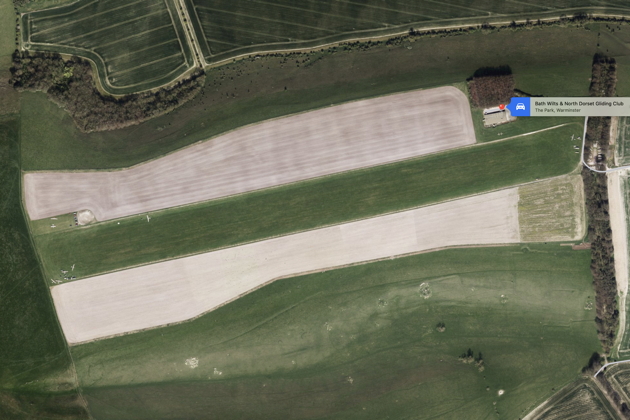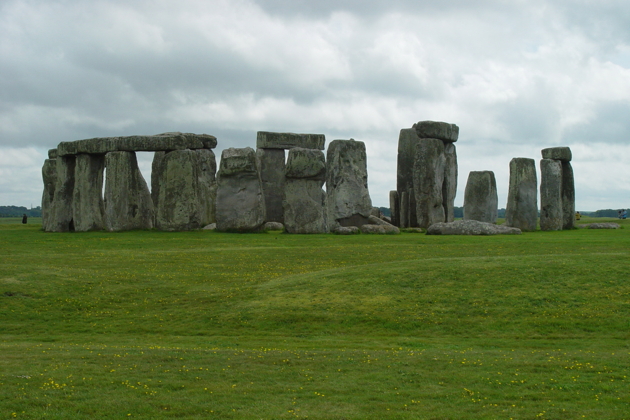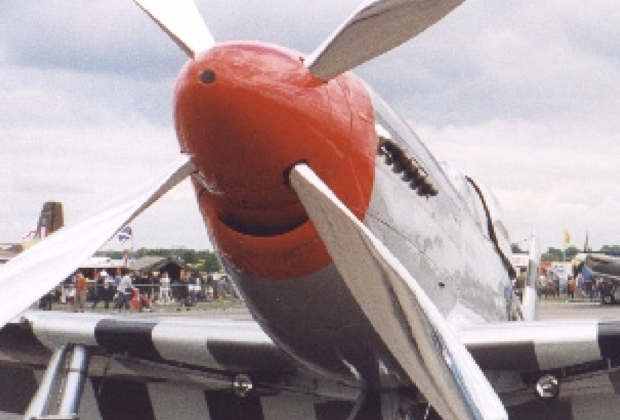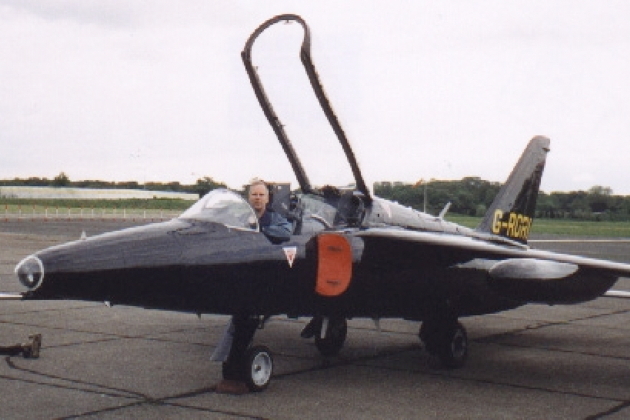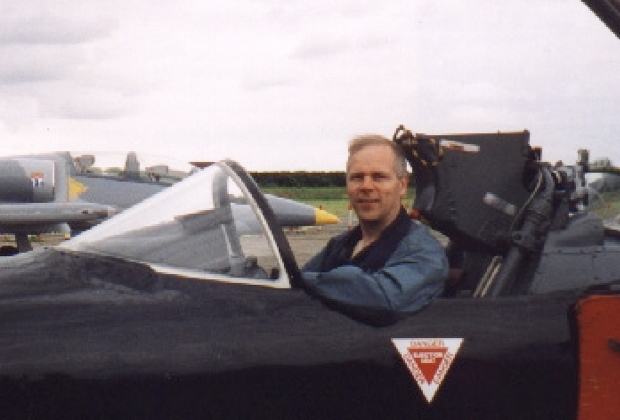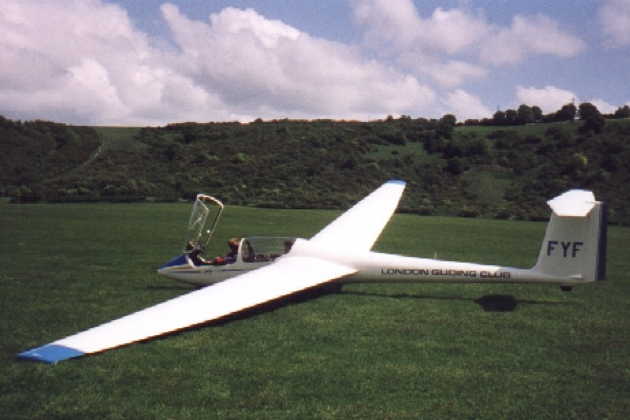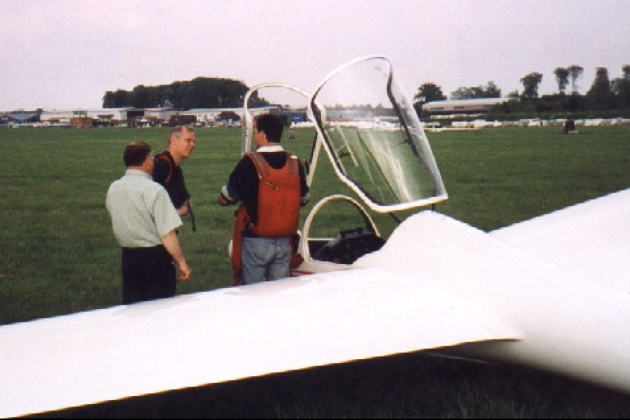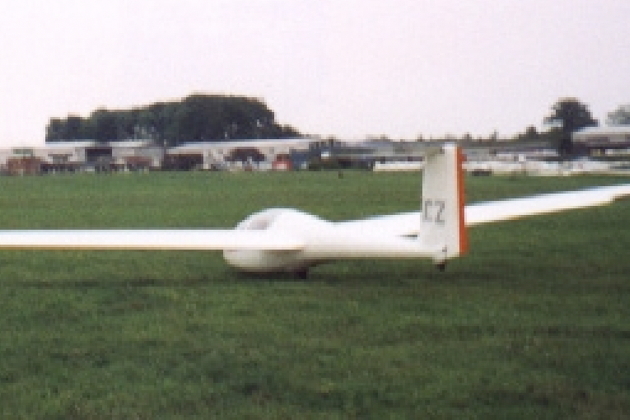FlightLog Archive
∟Aircraft Flown
Soaring in the UK - May 1999
I was headed to the London area for two weeks of business travel in May, and I had a three day weekend in the middle that I wanted to use to try to visit some of the local London gliding sites. Although the weather and conditions are not the greatest in the soaring world, the UK clubs, like many other European clubs, make the most of marginal conditions and are very vibrant.
I touched base with ex-BESC member Peter Jones in the UK via e-mail. Peter had flown with our club for a number of years while on assignment in Seattle for British Airways, and had earned a great reputation for his ability to find lift when others were dropping out of the sky. Peter and I talked about UK gliding when I gave him his last Flight Review in Seattle, and he e-mailed me with information on a number of clubs and locations to check out if I ever visited.
My luck when traveling often has other travelers shaking their heads in disbelief, and this trip was no exception. I was scheduled to fly SAS business class to Copenhagen, then on to London Heathrow. Our SAS 767 broke hard in Seattle due to a slat actuator failure, so instead I ended up catching the evening British Airways 747-400 out of Seattle directly to Heathrow. There was no room left in business class when I made it to the 747, so I ended up in one of the 14 First Class sleeper service mini-cabins - needless to say I got to Heathrow well refreshed, and earlier than my original schedule!
I continued on to Belfast, Northern Ireland for a week of work, and flew back to London on Friday night.
Peter Jones and I agreed to meet Saturday morning and head to his local gliding field. Peter is a member of the Bath Wilts & North Dorset Gliding Club, and bases his Slingsby Vega 17 at a field known as 'The Park', which is located in Kingston Deverill, near Warminster, about an hour SW of London off the M3 motorway. We arrived at the gliderport at 9:00, after winding through some typically narrow UK roads into a small village, then climbing a hill to a lush green field, looking all the world like just another pasture. 'The Park' was typical of the gliding fields I was able to visit, all with large, lush fields of grass and a large community of gliding enthusiasts. Peter and I toured the club's hangar, then put together his Vega.
All UK gliding activity is regulated by the British Gliding Authority (BGA), and the sailplanes carry tailcodes differing from the powered 'G' numbers, corresponding to US 'N' numbers. All the BGA clubs have a reciprocal membership agreement that allows for reduced fees for other BGA club members. In addition, I was extended similar rates due to my BESC club membership. One reason gliding is popular in the UK is its relatively lower cost than the prohibitively expensive powered flight costs. Even though lower cost than other types of flying, I thought prices were higher than US gliding, especially since I'm spoiled by BESC's great rates.
Before Peter launched in his Vega, I was introduced to the resident club instructors. All the UK gliding clubs I visited had a number of instructors available, especially during weekend operations. Many of the UK clubs have package deals for training, with many full week packages that offered as much instructional flying as you could get in a week. Much of the flying training is done using winch tows, which are fun to try if you've never flown one before. I had previously flown winch at the USAF Academy, with my classmate 'Sully' Sullenberger, and with a club in the Netherlands, so I opted for an aerotow at 'The Park'. My club instructor, Mike Edwards, introduced me to the club two-place ships, which were immaculate Polish SZD Bocians.
Another common practice at the locations I visited was that all glider flights were flown with parachutes, even demo flights in the two-place ships. Mike and I discussed the handling characteristics of the Bocian, which seemed comparable to ASK-13s that I had flown previously. The Bocian first flew in the 50s, but is still around many UK clubs. Takeoff behind the Pawnee towplane was normal, and we towed into a typical British spring sky, mostly overcast conditions with cloudbase around 2000 feet. Unlike US regulations, glider flight in cloud is permitted (and widely flown) in the UK.
Since I was just getting used to driving on 'other side' of the roads, I inquired about the normal tow release direction for the gliders. I had watched a few of the earlier tows, and noticed most of the gliders had turned left when releasing from tow, opposite the normal US convention. Mike noted that pilots have the option of turning into wherever they feel the lift is strongest, but generally do turns to the left after release.
After release I got a feel for the Bocian while working some small 1-2 knot thermals. While slightly ponderous and a bit lacking in rudder authority, it flew like a very honest ship and seemed well suited to initial glider training. While cruising around the local area, we were joined by other club ships, a few that had escaped from the pattern after a winch tow, others from aerotow.
'The Park' from the air looked exactly like its namesake, a long expanse of green that would be forgiving in most weather situations and student ability levels. I scratched around near cloudbase, getting a feel for the English air and the new glider type. Their pattern procedures were a bit looser than the US pattern procedures, but I felt the British gliding clubs definitely taught and exercised 'see and avoid' well, keeping their eyes out for a good awareness of other ships in the air. Pattern and final in the Bocian were flown around 55 knots, allowing for a smooth flare onto the lush grass landing strip.
We had to shut down flying a bit early for the day, since the Red Arrow flight demonstration team was performing for a celebration at a hilltop town just a few miles from 'The Park'. All the sailplanes were parked, and we sat with tea in hand with front row seats to our personal Red Arrows show. Not bad!
Some of the most interesting aspects to the London area and the UK in general are the impressive historical artifacts and sites scattered all throughout the countryside. On our way back from flying, while driving toward the M3 motorway, we came upon a field very similar to the one we'd just flown from, except with a few unlandable boulders in the way - you may have heard of it - Stonehenge. I was surprised to come upon this world renowned site out in the boonies of the English countryside. Walking around Stonehenge, I was impressed with the science and engineering knowledge of these local peoples from the English past. Dinner with Peter's family ended a fine first weekend day.
The next day I had received an invitation from Martin-Baker's new company pilot to visit an airshow at the North Weald airport, which is north of London off the M11 motor. Besides their interest for gliders, the British population in general has a fantastic enthusiasm for airshows, especially those with any World War II or Battle of Britain aircraft present. There are literally hundreds of airshows in the UK every year.
I was impressed with the number of classic warbirds on display, and even more impressed with the number of flight demonstrations. The flight demos included a Harrier GR7, five YAK 50s and 52s, a rare Bristol Beaufighter, a Grumman TBM Avenger, four Spitfires, a Hawker Hurricane, two P-40s, a P-51D (three others on static display), an Avro Lancaster, three Hawker Hunters, an OV-10, a Folland Gnat (another on static), a rare Fairey Swordfish, a T-28, plus numerous aerobatic demos. The flying started at 12:30 and was continuous until 5:30 PM! In addition, I felt the Red Arrows were following me, since they performed another airshow in front of me for the second day in a row. Nice welcome!
Martin-Baker's new company pilot, Bob Thompson, presented me with an exhibitor pass to get in amongst the pilots and warbirds, and I had a great time examining the cockpits of the Spitfires and Mustangs. Bob then took me on a tour of the Folland Gnat jet trainer that he had just flown in front of the crowd. Bob has half ownership in a Folland Gnat with Pink Floyd guitarist David Gilmour, plus other post war jets. Although I only got to sit in the cockpits this trip, there's always next time...
I was surprised at the number of 1950s and 60s military jet aircraft that were in the hands of private owners. Besides two Folland Gnats, there were three immaculate Hawker Hunters and two Czech jet trainers at North Weald. I'm just waiting for a private owner to get his hands on one of my old F-15 Eagles, then we'll definitely need to talk! I'll even instruct in them for free!
On Monday I visited two of the London area's largest gliding clubs, Booker Gliding Club at Wycombe (off the M4 motorway NW of London) and the London Gliding Club in Dunstable (off the M1 motorway N of London). Conditions were extremely blustery with gusts around 40 knots, and even higher winds aloft. I only spent a short time at Booker, since the pilots had stopped due to the conditions for an early lunch. I did get back to Booker later in the week, so read on.
The London Gliding Club is located in Dunstable, a few miles from the M1 motorway north of London. They have a huge tract of land at their disposal, and are known as the birthplace of British gliding, starting out in the 1930s. They had a number of ASK-21 two-place trainers, an impressive Duo Discus, plus a large number of high performance ships. Even with the rough conditions, ASK-21s, LS-8s and a Ventus were flying. Once again, both winch and aerotow operations were being conducted. The ridge looked convenient even when thermal activity was missing.
I ate lunch in the fully equipped luncheon area upstairs in the main glider hanger, and listened to some of the local stories. One recent story concerned an LGC ASK-21 that had been struck by lightning, blowing off both wings! Amazingly, both pilots had been able to jump out and successfully use their chutes.
Booker Gliding Club's location at Wycombe airport was only about 10 miles from my hotel, so when we finished our work early on Wednesday, I raced to the airport to try to get a flight in before building clouds and dusk settled in. As I headed out to the glider operations area, a French Bleriot was warming up at the end of the runway.
Even though the skies looked a bit overdeveloped, the Booker club instructor, David Byass, gladly agreed to fly with me for a club checkout flight, so off we went! This was my first flight in an ASK-21, which flew very nicely for a two-place bird. Even with the fixed gear, it was very quiet and the flight control forces were well balanced. Even though the Booker grass strip had a few ruts in it, takeoff and especially climbout behind the Robin towplane seemed like we were on rails.
On tow in the ASK-21, we flew through some virga which pelted the glider with some fairly large drops, so we signaled the tow to head over to a clearer area. David stated that although a left turn after release was standard, as long as the glider made a distinctive turn away, they really didn't care which way you turned after release, as long as it was visible to the tow. I again tried scratching around some of the dissolving lift, while viewing the local environment and enjoying the ease of flight in the ASK-21. We definitely need one of these two-place trainers in the Boeing Soaring Club - are you listening Board members?
We were much closer to Heathrow than the other glider fields, and it was interesting to contrast the Bleriot on the ground below with a Concorde making an approach to Heathrow. David mentioned that his 'daytime' job was flying Concordes for British Airways, and we compared stories of life at Mach 2 in an F-15 vs. a Concorde. The in-flight service in the Concorde is definitely better, but everyone knows that any airplane you can stand up in is too big!
The lift had definitely died for the day, so I cranked into a few tight turns and a lazy eight to get a feel for the ASK-21, definitely nice for a two-place machine. A short pattern and final were extremely easy, and even though the wheel brake was inop, the rollout was short. I guess I didn't scare David too badly, since he signed me off for solo in all the Booker single-seaters.
A local pilot's lounge/pub right on the field seemed a good place to keep dry from the coming downpour, and it was a great venue to discuss flying stories from Bleriots to Spitfires (also on the field) to Concordes to F-15s.
The only other gliding center that I wanted to visit was the gliding club at Lasham, which is a huge training and soaring field SW of London. But there's always the next trip, plus some solo flying. I really enjoyed the hospitality and professionalism at all the clubs, plus the obvious love of flying.
Thanks for everything, Peter!
 KASPRZYK
KASPRZYK
